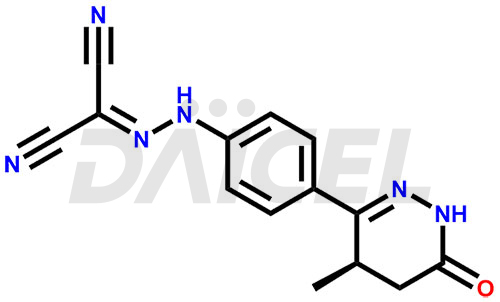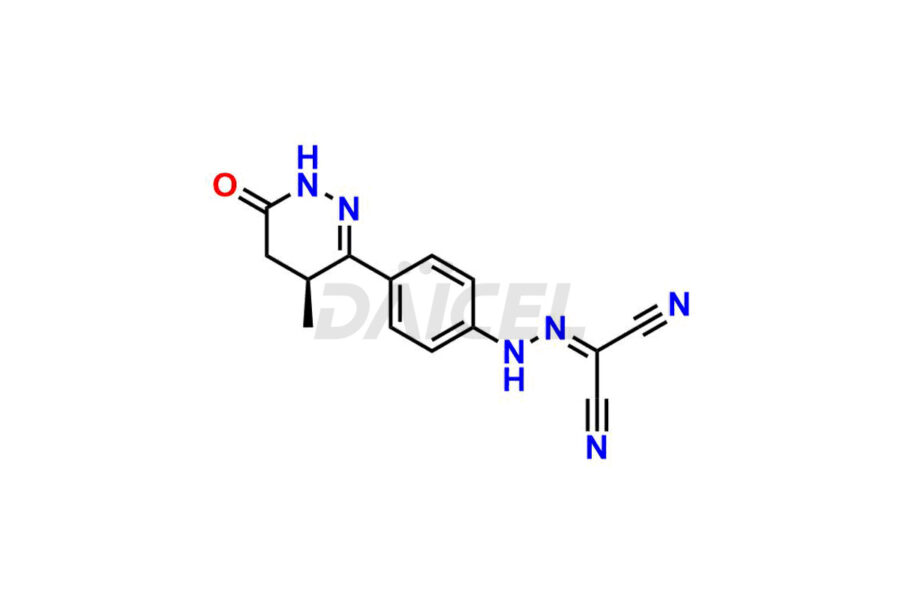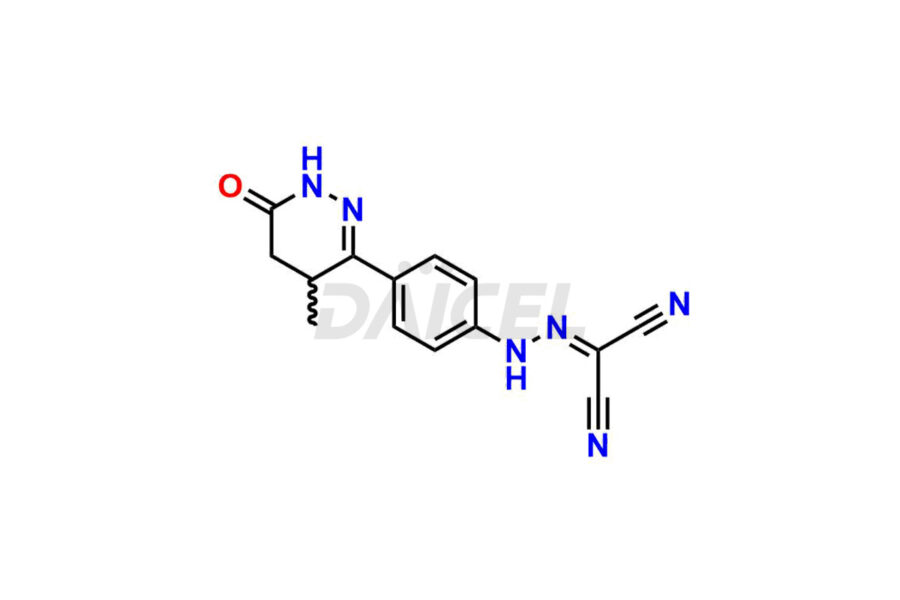Levosimendan
General Information
Levosimendan Impurities and Levosimendan
For Levosimendan purity and safety of an active pharmaceutical ingredient, Daicel Pharma offers a customized synthesis of Levosimendan impurity standards. These impurity standards include crucial compounds such as Dextrosimendan Impurity and Levosimendan racemate. Additionally, Daicel Pharma provides worldwide delivery options for Levosimendan impurity standards.
Levosimendan [CAS: 141505-33-1], an inotropic agent, treats heart failure. It functions as a vasodilator agent and an antiarrhythmic drug. It acts as an EC 3.1.4.17 inhibitor, a type of 3′,5′-cyclic-nucleotide phosphodiesterase.
Levosimendan: Use and Commercial Availability
Levosimendan, marketed as Simdax, is a calcium sensitizer and potassium channel opener for the short-term treatment of acutely decompensated severe chronic heart failure. It is a vasodilator and cardiac stimulant. Levosimendan also opens vascular smooth muscle cells.
Levosimendan Structure and Mechanism of Action 
The chemical name of Levosimendan is 2-[2-[4-[(4R)-1,4,5,6-Tetrahydro-4-methyl-6-oxo-3-pyridazinyl]phenyl]hydrazinylidene]propanedinitrile. Its chemical formula is C14H12N6O, and its molecular weight is approximately 280.29 g/mol.
Levosimendan sensitizes troponin C to calcium and increases the effects of calcium on cardiac myofilaments.
Levosimendan Impurities and Synthesis
Levosimendan impurities refer to the undesired substances or byproducts that may be present in Levosimendan formulations. They can arise during the manufacturing process1 or storage of the drug. The impurities in Levosimendan can impact its purity, quality, and overall effectiveness. Therefore, pharmaceutical manufacturers need to monitor and control the impurity levels in Levosimendan to ensure product safety and efficacy. Stringent quality control measures help minimize impurity levels and maintain the purity of Levosimendan for treating heart failure.
Daicel Pharma strictly adheres to cGMP standards and operates an analytical facility for preparing Levosimendan impurity standards, which include Dextrosimendan Impurity and Levosimendan racemate. Our Levosimendan impurity standards have a detailed Certificate of Analysis (CoA) that provides a comprehensive characterization report. This report has data obtained through techniques, 1H NMR, 13C NMR, IR, MASS, and HPLC purity analysis2. Upon request, additional data like 13C-DEPT can give. Moreover, we can synthesize unknown Levosimendan impurity standards and degradation products. Each delivery has a comprehensive characterization report.
References
FAQ's
References
- Backstrom, Reijo Johannes; Haarala, Jorma Veikko; Honkanen, Erkki Juhani; Nore, Pentti Tapio; Wikberg, Tom Erik Ingemar; Haikala, Heimo Olavi, (-)-[[4-(1,4,5,6-Tetrahydro-4-Methyl-6-Oxo-3-Pyridazinyl)Phenyl]-Hydrazono]Propanedinitrile, Orion-Yhtyma Oy, Finland, EP565546B1, March 8, 1995
- Zhang, Jun; Gage, Eric M.; Ji, Qin C.; El-Shourbagy, Tawakol A., A strategy for high-throughput analysis of levosimendan and its metabolites in human plasma samples using sequential negative and positive ionization liquid chromatography/tandem mass spectrometric detection, Rapid Communications in Mass Spectrometry, Volume: 21, Issue: 14, Pages: 2169-2176, 2007
Frequently Asked Questions
How are Levosimendan impurities identified and characterized?
Analytical techniques such as chromatography, spectroscopy, and mass spectrometry help identify and characterize Levosimendan impurities.
How are impurity levels monitored in Levosimendan?
Pharmaceutical manufacturers perform regular testing and analysis to monitor impurity levels throughout the manufacturing process and the drug's shelf life.
What solvent is typically used for analyzing Levosimendan impurities?
DMSO is solvent when analyzing many impurities in Levosimendan.
What is the recommended storage temperature for Levosimendan impurities?
Levosimendan impurities should be stored at a controlled room temperature, usually between 2-8 °C.
Note: Products protected by valid patents by a manufacturer are not offered for sale in countries having patent protection. The sale of such products constitutes a patent infringement, and its liability is at the buyer's risk.



